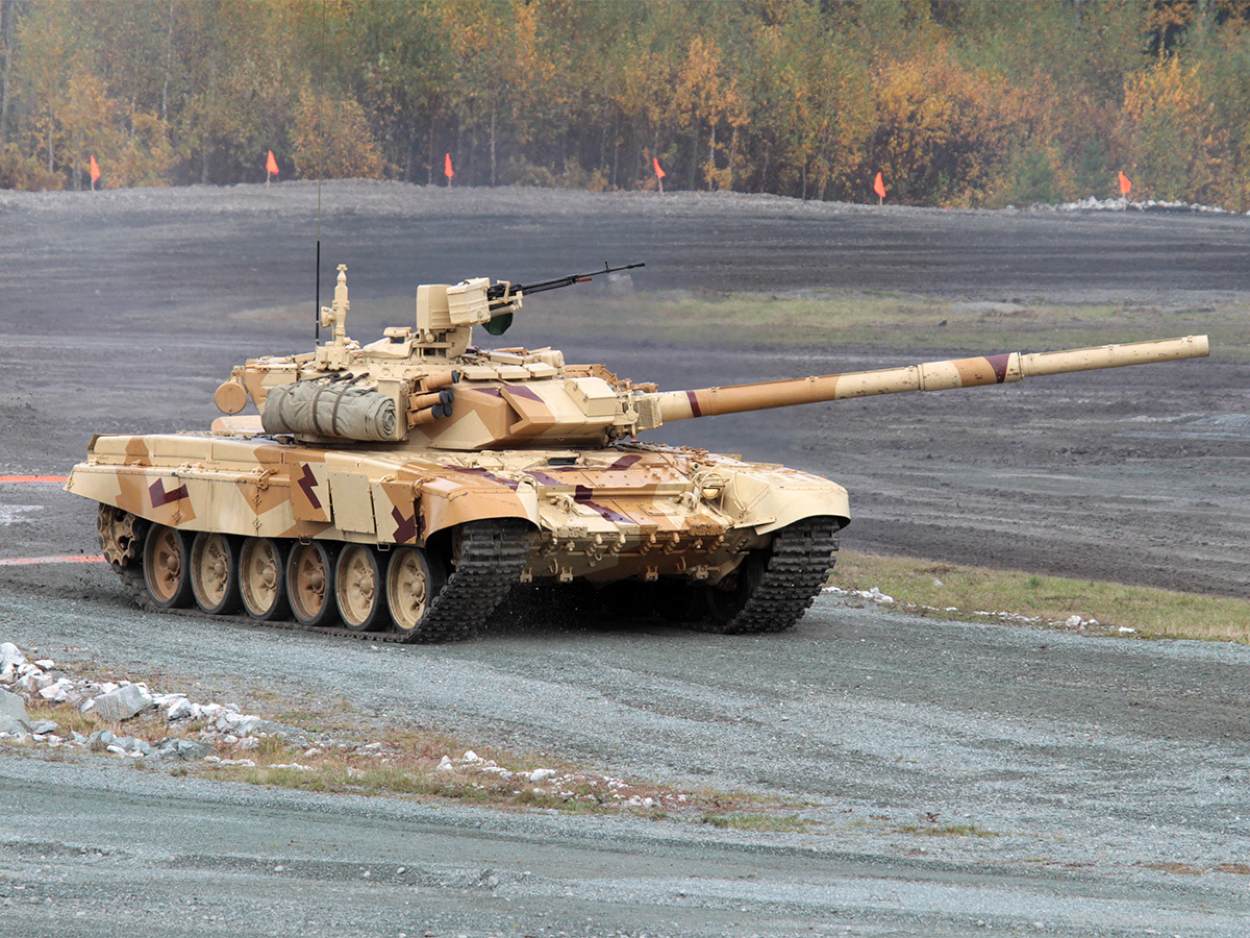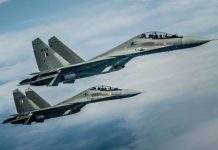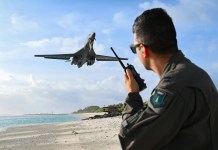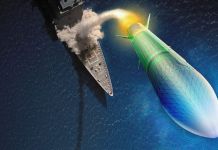Amid heavy tank losses incurred by the Russian Army due to Ukrainian missiles and drone attacks, a Russian state arms manufacturer is reportedly outfitting T-72B3M and T-90M Proryv tanks with extra protection.
The Uralvagonzavod of the Rostec state corporation has begun supplying the troops with T-72B3M and T-90M Proryv tanks, which are standardly equipped with visors for additional protection against kamikaze drones. The Russian frontline troops had previously installed these visors on their own.
This was observed in an online video showing the tanks’ dispatch to the troops. Although both T-90 and T-72B3M have been fitted with visors, the video specifically focused on the latter.
In the footage, the T-72B3M tank with a standard design fitted at the factory can be seen on a train as they are being delivered to the troops. It entails a canopy above the tower and comprises corner metal profiles positioned horizontally.
The T-72B3M is a modern version of the T-72B3 tank, which has been extensively deployed in the war against Ukraine. Russia has lost more tanks in the ongoing war than anyone in its military would have anticipated, including the T-72B3M. Some of these tanks have also allegedly been captured by the Ukrainian forces.
🇷🇺UVZ reports it has handed over to the MOD the latest batch of T-90M and T-72B3M tanks pic.twitter.com/StSakaxHkY
— Tony (@Cyberspec1) October 11, 2023
Images from the Northern Military District zone had previously shown tanks with similar armor, placed on them by soldiers on their own on the frontlines to protect the tanks from Ukrainian kamikaze drones hunting for these tanks, believed to be the most advanced in Russian arsenal. Due to their shape similarity, the structure is popularly referred to as the “barbeque” by Russian soldiers.
Visors are structures welded in military workshops on the tank tower and designed to protect it from being hit from above. When the Russian soldiers first started using visors, it was to protect the tanks from Javelin ATGMs, which attacked the tank from above. However, with Ukraine rapidly adopting kamikaze drones to launch attacks on Russia, kamikaze drones have emerged as a more significant threat.

Rostec noted that the experience of a particular operation suggested such a design. They called visors a simple but effective solution. “The design protects vehicles and crews from kamikaze drones, and ammunition dropped from drones. Previously, fighters made such canopies using a makeshift method. Now new tanks are equipped with protective grilles as standard,” the state corporation reported.
The threat from Ukrainian drones is such that Russian troops have been fitting their best tanks with cope cages, a unique defense employed in heavy military vehicles to lessen the damage brought on by high-explosive anti-tank (HEAT) weaponry.
Although deemed ineffective, these protective structures have garnered widespread popularity during the ongoing conflict, so much so that Russia is now marketing them. At the Army-2023 defense expo earlier this year, Russia displayed a new version of the T-90M equipped with a “Cope Cage” or “Protective Canopy” to improve defense against drone strikes.
Despite the layers of protection installed by the Russian troops and its state arms manufacturer Rostec, the tanks continue to be blown up by the Ukrainian forces. A T-90 Breakthrough tank, believed to be the most advanced in Russian inventory, met a tragic fate in a missile attack captured on video.
T-90’s Horrific Destruction Caught On Camera
Recent video footage that has surfaced on social media reveals that Ukrainian forces have decisively destroyed one of Russia’s cutting-edge T-90M Proryv-3 (Breakthrough-3) main combat tanks.
The catastrophic damage caused the T-90M in question to lose its turret. Col. General Oleksandr Syrskyi, the head of the Ukrainian Ground Forces, first shared a video of the incident on his Telegram channel on October 8. According to Syrskyi, an Anti-Tank Guided Missile (ATGM) company from the 66th Mechanized Brigade destroyed the T-90.

It is still unknown precisely when the tank was destroyed. However, it has been speculated that it happened east of Makiivka, a city in the Luhansk Oblast. In the footage likely recorded by a Ukrainian drone, the T-90M is seen accelerating along a field’s edge before launching an attack on an oblique target.
While there was previously ambiguity about the tank, a video published later showed the tank’s distinctive remote weapons station situated on top of the turret, leading to its identification as the T-90M.
The T-90M can be seen firing rounds from its 2A46M-4 125mm smoothbore main gun. The tank explodes after a Ukrainian ATGM suddenly hits it. The remainder of the clip shows smoke rising from its flaming wreck.
#Ukraine: The Ukrainian 66th Brigade destroyed another Russian T-90M tank with an ATGM strike in the vicinity of Makiivka, #Luhansk Oblast. The ammunition on board was hit, resulting in an impressive cookoff. pic.twitter.com/E5vRRVNsef
— 🇺🇦 Ukraine Weapons Tracker (@UAWeapons) October 8, 2023
Soon after the video of this incident went viral on social media, military experts observed that this horrible visual serves as a stark warning that an armored vehicle like this one, which is touted as among the best in the world, could explode if the proper force were applied at the correct time and the correct part of the tank.
The fact that the tank’s turret was the casualty also led military watchers to comment that it is a common feature among Soviet and Russian tanks, the turrets being the most vulnerable to destruction when hit by a missile.
The destruction has attracted eyeballs specifically because it is the most advanced in the Russian arsenal, besides the T-14 Armata. “Proryv” is the most sophisticated armored vehicle in the family of T-90 tanks owing to its all-around protection, a contemporary round-the-clock highly automated fire control system, and improved survivability technology.
According to its manufacturers, it is most importantly suitable for operations on a modern battlefield. The Russians reportedly started the invasion with about 100 of these tanks, first deploying it in the summer and recording the first loss by a tank.
27 T-90Ms, including the version just targeted on October 8, have been destroyed, according to the Oryx OSINT group, which only keeps track of lost, damaged, and destroyed wartime vehicles based on visual proof. Nearly 20 tanks have additionally been damaged, despite Russia’s best efforts to protect them.
- Contact the author at sakshi.tiwari9555 (at) gmail.com
- Follow EurAsian Times on Google News





